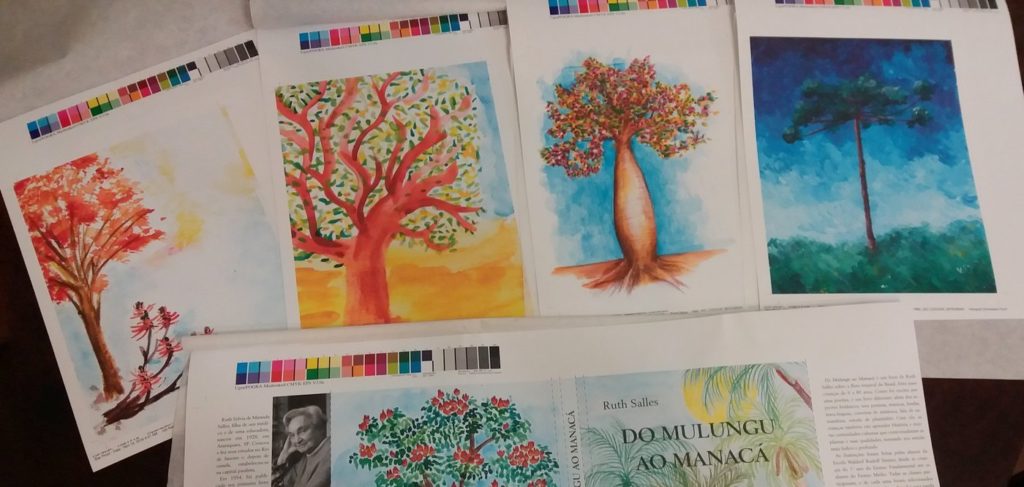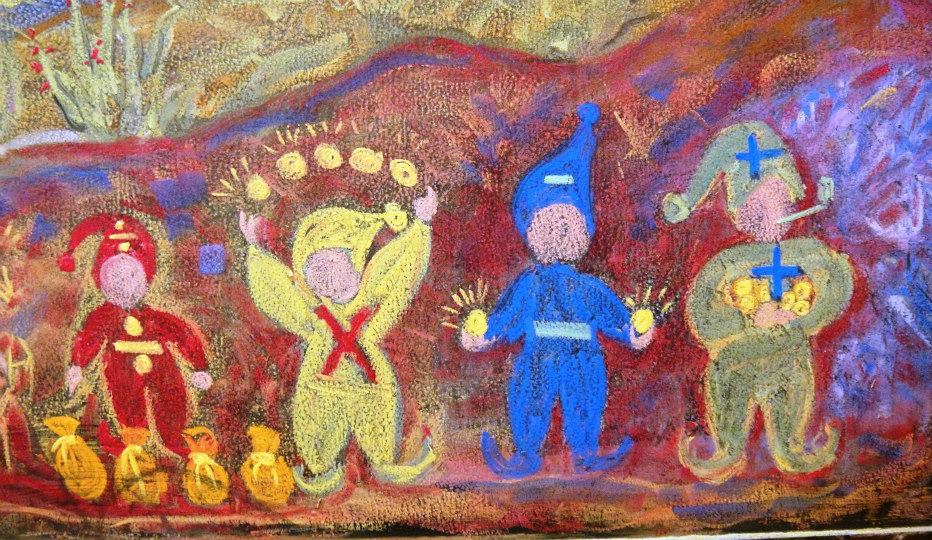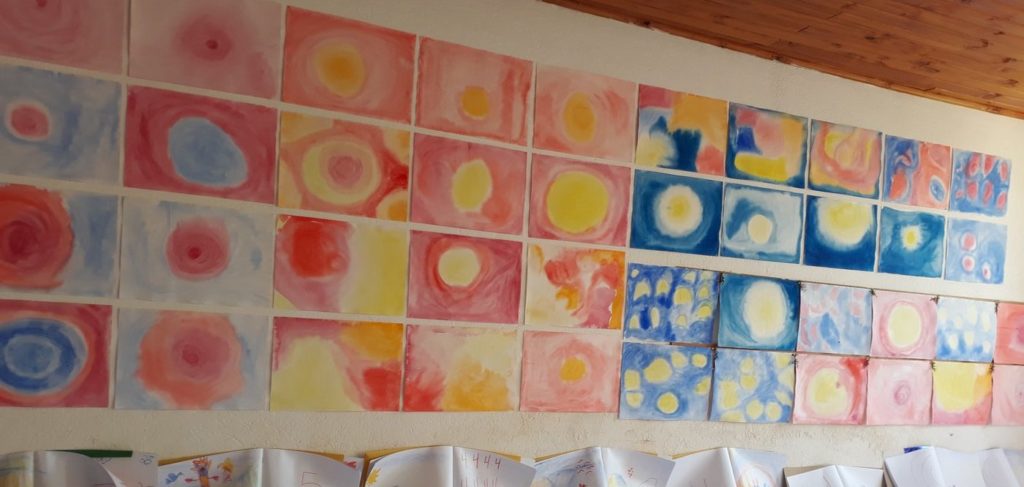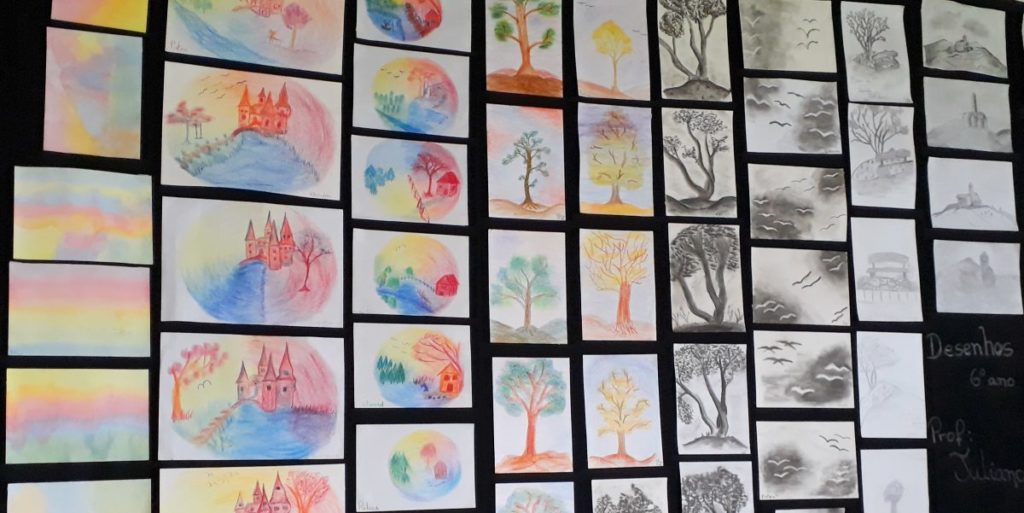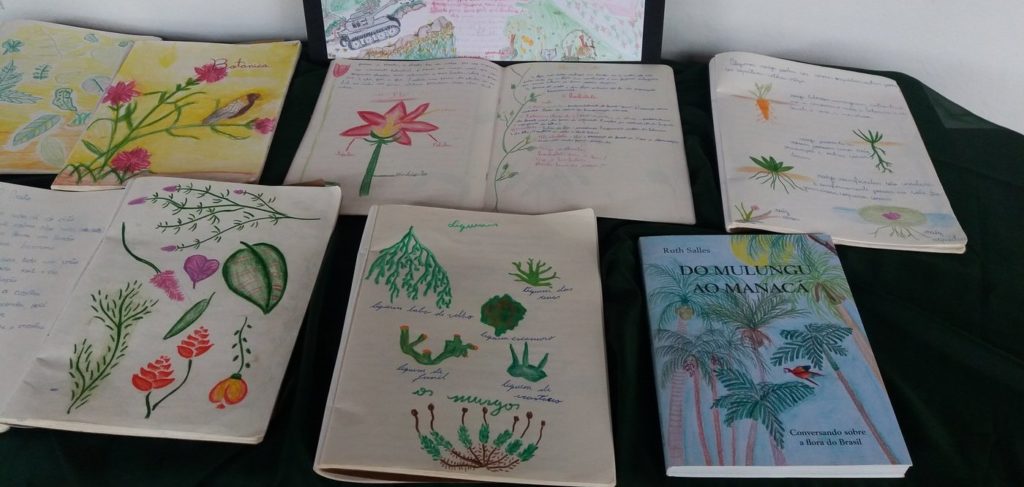Introduction to shape design
Credit: Text bbased on the book “Do Movimento ao Traço e à Escrita”, by Luíza Helena Tannuri Lameirão – Ed. João de Barro, 2016
Drawing shapes is a pedagogical activity created by Rudolf Steiner, and is used from the 1st grade onwards, when the child is around 7 years old. At this stage, the drawing of shapes forms the basis for learning to write and helps the educator to broaden the child's sensitivity to the shape of objects and beings in nature.
1st year
During the first seven years, all the child's energy is dedicated to their body and motor development, and naturally focused on the practice of large gestures, such as running, jumping, jumping, climbing, etc., but from the age of 7 they are ready to develop skills thinner. Writing is one of the most important and expressive human skills, and the Waldorf teacher seeks to help children develop it from experiences based on their natural impulses.
The small child already ventures to draw, and we can see that his doodles are always based on two basic shapes: straight and curved. So, what we do is start from this natural initiative of the child, which initially consists of chaotic scribbles, and lead them to draw increasingly harmonious shapes. Just as the child learned to walk, move and speak, the achievement of written language must be an exercise in perception, skill and movement harmonization, to transform the tracing of lines into language. The best path for this exercise is always artistic, pictorial, starting from action to reach understanding, so that the development of writing is not just an exercise in coordination and skill, but is a human experience, involving feeling, thought and action.
The experience of tracing the lines begins with the children walking, as if they were forming the lines with their own body, and walking with their eyes closed, so that they can experience the sense of movement. Then, with their arms in the air, standing and sitting, they do the movements that represent the tracing of the lines, before starting to exercise them on paper. In the beginning, crayons or colored pencils are used to trace the lines, evolving in the future to finer writing pencils. Drawing shapes is a constant practice, a small part of the class, but always evolving in difficulty, which leads to the improvement of children's writing and aesthetic sense.
On the first day of class, in the first year, the line and the curve are presented to the children, as these will be the basis for learning the alphabet in capital letters, which will be taught first.

At this stage, the exercises with the lines are done by occupying large spaces, such as a large sheet of paper, or a small individual blackboard, where children can start practicing with large movements. It is also important that the teacher give a certain solemnity to this activity. When drawing the lines on the board, his movements should be slow, deliberate, and silent, and the children should notice that he strives for the best result, just as they should.
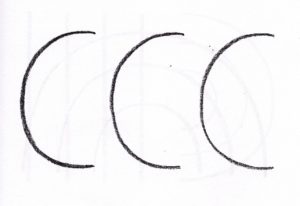


2nd year
In the second year, children will practice the lowercase alphabet. As in lowercase letters we have cases of mirroring, as in the examples below, this will be the object of work in the shape drawing.

A vertical axis or a horizontal axis are used as a reference. They are simple exercises, always using the straight and the curve, with which students are already familiar, always seeking to achieve symmetry.

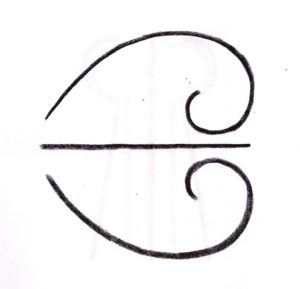
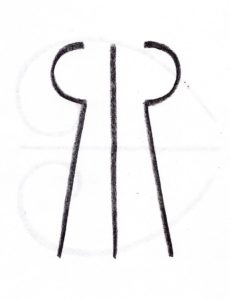
The next variation to work on is rhythmic symmetry, with straight and curved lines forming rhythms. In these forms, the straight line is used as the shortest element, and the curve as the longest element, forming juxtaposed or mirrored sequences.
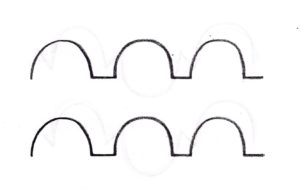
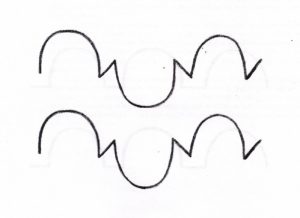
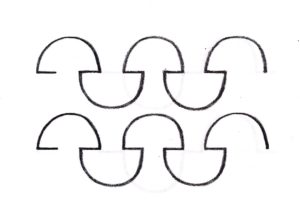
3rd year
In the third year, the main purpose of drawing shapes is to help introduce cursive writing. The child at 9 years old goes through a very important phase for the affirmation of his Self, his personality, and it is at this time that he begins to form his individual writing. According to Luíza Lameirão, “the exercises based on the wavy line, which demand the flow of the tracing, need to be constantly performed before the introduction of cursive writing. Every cursive alphabet derives from the wavy line and two transformations of it: loops and rods. In the loop, the wave rises and bends; on the stem, as it rises, the wave tightens, results in a spike and returns.”
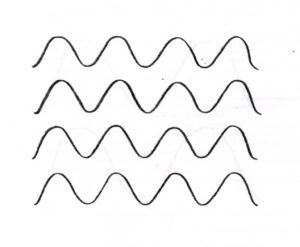
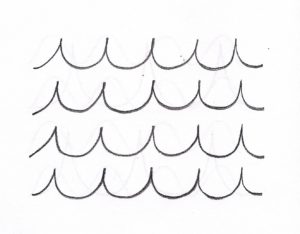
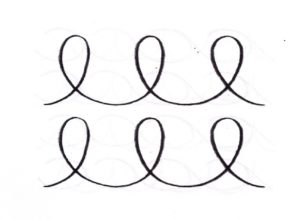

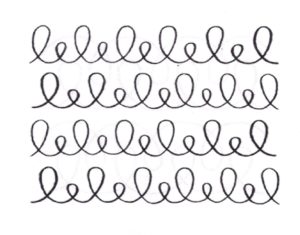
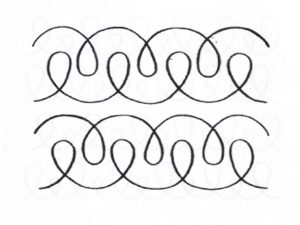
Also in this work, the practice should start with large movements, on a large sheet of A3 format folded in half, then folded in four, and with thick colored pencils, or with blackboard chalk on small individual slates, before moving on to the A4 sheets and notebooks. The teacher can propose numerous variations of tracing and mirroring, increasing the degree of difficulty, before introducing the cursive alphabet.
In the third and fourth year, the mirrored shape drawings, which in the second year are made based on a vertical axis or a horizontal axis, are now also made with these two crossed axes, to work on four-sided symmetry, or symmetry. central.
Figure
The practice of drawing shapes in these early school years represents an introduction to Geometry in an experienced way, which will later evolve into a more abstract and conscious study.
For the 9-10 year old we also introduce shapes based on the circle, always drawn freehand.
In the fourth year, when Greece is studied, the design of shapes can be done seeking to reproduce the shapes of the shield ornaments, for example. Already in the fifth year, on the occasion of the study of botany, and representation of the forms of nature is a rich motive for beautiful drawings.
Thus, shape drawing, in addition to being the basis for the development of writing, also enriches the lived study of several other subjects. Its use also helps in the therapeutic treatment of special children.
Featured image: 2nd year students at Waldorf Aitiara School.


